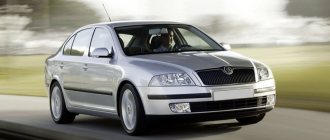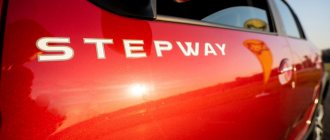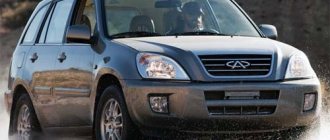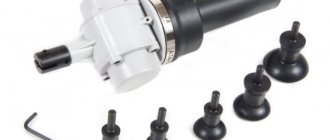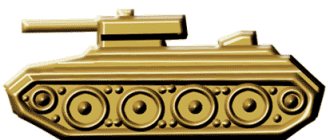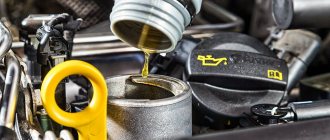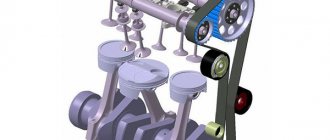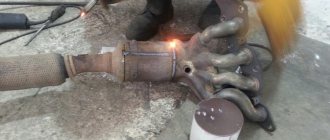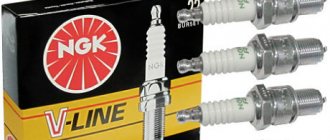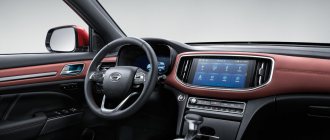Content
- Engines
- Transmissions
- Ride quality
- Equipment and options
- Typical problems
- Problems in the secondary market
- So which is better: Rapid or Octavia?
Many of those who are looking at the pre-restyling Rapid are looking towards the high school Octavia. The price difference between liftbacks is negligible. For the first "Rapid" on the secondary market they ask for 565 thousand rubles on average, for the third "Octavia" - 694 thousand rubles.
At first glance, the Octavia is more interesting than the Rapid, both in terms of equipment and power units. That’s why many people refuse the Rapid and save money to buy a C-class liftback. But is it worth overpaying? We will answer this question in the article.
Comparison race
The results of the Skoda Rapid vs Skoda Octavia test drives are also very interesting. Here, for example, are test data for two models with the same 1.2-liter TSI engines and 6 manual transmissions.
Test drive a Skoda Octavia:
As soon as you look under the hood, the difference in price and positioning of these cars becomes clear. So, the Rapid is equipped with an engine with eight valves, while the Octavia has 16. As a result, this gives the latter more dynamics with a more economical ride.
Good and good with a plus
In general, both cars are not shy on the road, they behave like fish in water. You don’t even have to accelerate; the car itself suggests the optimal driving mode.
Test drive a Skoda Rapid:
The driver feels the car well, and it feels him. There is no doubt about the prompt execution of steering commands. Due to the tight suspension, confidence is achieved in turns and does not shake on bumps. In general, everything is fine. But Octavia still shows herself to be “good with a plus” - more flexible and obedient.
Engines
Let's start comparing the Rapid and Octavia with the engine range. Rapid is available with 1.2 liter, 1.4 liter and 1.6 liter engines with power ranging from 75 to 125 hp. With. The Octavia line includes 1.4-, 1.6- and 1.8-liter units developing 110-180 horsepower.
The optimal modification of the Rapid is considered to be the version with a 1.6-liter naturally aspirated engine producing 110 horsepower. It accelerates to the first hundred in 10.3 seconds. The maximum speed is 195 km/h, and the actual fuel consumption in the combined cycle is 7 l/100 km.
"Octavia" with the same engine is less dynamic. However, this is not surprising, because the C-class liftback is heavier (1,255 kg versus 1,165 for the Rapid). Acceleration to 100 km/h takes 12.2 seconds. The maximum speed is lower - 188 km/h, fuel consumption is higher - 8 l/100 km.
Those who are planning to purchase a Rapid or Octavia should know that:
- On the younger 1.2 MPI (CGPC) engine, already after 80 thousand km the timing chain begins to “slip” (accompanied by a roar when starting the engine). Replacing it costs a pretty penny - from 30 thousand rubles.
- The 1.6 MPI (CFNA) engine torments owners with knocking pistons (replacement of the piston group starts from 20 thousand rubles).
- The 1.6 MPI (CWVA), which appeared a little later, became famous for its “oil guzzler” due to the design of the unit. Every 50 thousand km it is necessary to decarbonize the combustion chamber (about 1,500 rubles + replacing the engine oil and filter). The Rapid's left engine mount also knocks (from 1,000 rubles).
- The 1.4 TSI turbo engine (EA211) suffers from stretched timing chains, destruction of pistons and rings, and bent valves. Often the pump fails, the replacement of which costs the owner almost 6,000 rubles.
- At 1.8 TSI (CJSA), the timing chain is stretched. At a mileage of about 100 thousand km, the oil pressure drops (due to wear of the camshafts and liners), and the phase shifter valves become “naughty” (from 8,000 rubles).
The engines of rivals are well known, because they are installed not only on Skoda, but also on related Volkswagen Polo and Jetta.
Also read: Skoda Octavia A7: pros and cons of the most family-friendly liftback
Engine and transmission
Skoda Octavia: this model has more powerful power units. Their power, respectively, is 103 hp for the Octavia and 84 hp for the Rapid. Agree that 19 horses “make a difference” in the power of any car, the 18% advantage speaks for itself. Although lovers of more horsepower need a reserve of money to pay transport tax. Maybe this is a minus?
Performance
The “faster” Skoda Octavia accelerates to 100 km/h in 10 seconds versus 11.4 seconds for the “turtle” Skoda Rapid. The difference, although insignificant, is only 1.4 seconds, but... The maximum speed shown by the Octavia is 196 km/h - this is 13 km/h more than that of the Skoda Rapid. Its capabilities stopped at 183 km/h.
Fuel tank
The Skoda Rapid's fuel tank holds 5 liters less - 50 liters, while the Octavia's tank holds 55 liters of fuel.
Emissions
Skoda Octavia pollutes the air less with harmful emissions. This model has only 114 g/km. The Skoda Rapid smokes indecently more – by 5 g/km. The indicators of its exhaust emitted into the atmosphere are 119 g/km.
Transmissions
The gearboxes of Czech liftbacks are almost identical. Both models were equipped with six-speed automatic transmissions and seven-speed DSG robots. The only difference is in the mechanical transmissions: the Rapid has five speeds, the Octavia has six.
The owners of Rapid and Octavia have no complaints about the performance of the latter. The only thing that may bother you is the extraneous noise of the manual transmission in the winter season. The “musical accompaniment” stops as soon as the transmission oil warms up to operating temperatures.
The well-known DSG robot underwent a number of upgrades before becoming friends with the first Rapid and the third Octavia. The only thing that remains unresolved is the problem of mechatronics, the repair of which empties the wallet by 20 thousand rubles.
The automatic transmission of Czech liftbacks is very capricious. Friction clutches wear out closer to 100 thousand kilometers (replacement costs from 20 thousand rubles), which is accompanied by jerks when changing gears. To avoid problems, it makes sense to change the ATF fluid every 50-60 thousand km, be it a Skoda Rapid or an Octavia.
Let us add that in our country only the front-wheel drive version of the Skoda Octavia was sold. The Europeans were luckier: they were also offered liftbacks with four driving wheels. In Russia, such specimens are found (imported from abroad), but extremely rarely. Rapid is only front-wheel drive.
Also read: Which Skoda Rapid to choose
Skoda for a million: stuffed Rapid or empty Octavia?
Pavel [therock9618]
14.12.2017,
When choosing a car, a person is constantly faced with a choice: to buy a small car with rich equipment or for the same money a car of a higher class, only with a simple configuration? I will try to figure it out using the example of the Skoda brand, namely the latest models Skoda Octavia and Skoda Rapid, located in the same price segment, plus or minus one million rubles. I will dwell in more detail on each car, indicate their advantages and disadvantages, and based on the results obtained, it will become clear which of these representatives is more profitable.
I'll start with the sales rating. Having analyzed the sales results, I will say that both liftbacks are widely popular in Russia and are among the twenty best-selling cars. And this is due not only to the growth of the market and the moderate price of this brand, but also to the release of restyled versions of these models.
The exterior of both cars is made to the highest standards. The eye is pleased with the sporty geometry of the body and new LED optics, emphasizing the image of the models. Of course, the cars differ in overall dimensions and, if placed side by side, the Octavia looks sleeker and more expensive than the Rapid. The interior is made in the same style. And you can’t call it poor at all, because it was borrowed from its older brother Volkswagen Pssat B7. Visually, the overall appearance of the Rapid's interior will be brighter: the presence of glossy inserts on the front panel, red inserts on the windshield pillars, a leather steering wheel and seats with red frames. But the plastic itself is only pleasant to look at, but it is hard to the touch.
When you change into the Octavia, you immediately get the feeling of having a huge space inside, with high-quality finishes. And if in the Rapid the rear passengers have to make room, then in the Octavia there is also plenty of legroom, and the absence of small decorative elements, such as inserts and so on, is simply forgotten, receding into the background.
The common advantage of both representatives of the Skoda brand is the liftback body, which the Czechs very cleverly disguised, allegedly passing it off as a sedan. Thanks to this body layout, we got a spacious trunk, and the well-opened fifth door does not interfere at all when loading large objects. The latest versions of Skoda have tension nets and Velcro strips in the trunks to enclose a separate area and make transportation easier. Another plus in favor of the Octavia is the larger trunk volume, which is 588 liters, and with the rear row folded, as much as 1718! The Rapid does not boast such a capacity, because it has 530 liters, and with the backrests folded - 1470.
Now it's time to touch on the engine range of cars. Several naturally-aspirated engines are installed on the Rapid. The base naturally aspirated engine is 1.6 liter, 90 hp, made exclusively in combination with a five-speed manual transmission. Since the Rapid is relatively light, this unit allows it to reach 100 km/h in less than 11 seconds - this is not a bad indicator for a base engine. Next comes the forced 1.6, with increased power to 110 hp, which reduces acceleration time by 1.5-2 seconds. Such a small difference is almost unnoticeable, so purchasing a car with a 110-horsepower engine can only be explained by the fact that in addition to a manual gearbox, a six-speed automatic transmission is available. The latter has good dynamics and ensures smooth gear shifting, and the difference in acceleration with a manual transmission is only a little more than a second.
Another version, which I call the “hellish mixture”, is a combination of 1.4 TSI (125 hp) and a seven-speed “dry” DSG. According to the manufacturers, it provides very good vehicle dynamics (9 seconds to 100 km/h) and optimal fuel consumption of 7 liters per 100 km, while the basic aspirated car in similar conditions consumes more than 8 liters of fuel. At first glance, there are only advantages. Only the majority of drivers are afraid of precisely these advantages, not wanting to deal with DSG, the reliability of which is questionable. More information about the robotic gearbox can be found in a separate article.
As for the Octavia, a 1.6 engine with 110 hp is offered for a similar price. The acceleration dynamics are inferior to the Rapid and are 10.5 seconds for a manual transmission, and 12 with the same six-speed automatic transmission. For a car of this class, I would like more. And the most interesting thing is the configurations and their prices.
Having a million rubles with you, you can safely purchase a Skoda Rapid in the top-end “Style” configuration. For 830 thousand rubles, the car is available with a basic 1.6 engine (90 hp), and for 888 thousand - a powerful, 110 hp 1.6. The combination with an automatic transmission will cost 933 thousand, and equipment with a 1.4 TSI engine and a seven-speed DSG will cost 975 thousand rubles. The package includes an ABS and ECP system (vehicle stability), a cruise control system, a multifunction steering wheel, four airbags, climate control, an interior mirror with an auto-dimming function, heated seats, heated mirrors and windshield washer nozzles, fog lights, with an area lighting system in direction of the turn and the increasingly popular new feature of Skoda - an umbrella, which Rapid has hidden under the front passenger seat.
With the remaining money, you can order a package of additional options: heated windshield (10 thousand rubles), tinted rear window (4.7 thousand rubles), rear window wiper (3 thousand rubles) and engine protection (6.3 thousand rubles).
But when buying an Octavia, you won’t get much out of it. A car with a basic 1.6 engine (110 hp) and a manual transmission costs 965 thousand rubles, and a six-speed automatic will cost 1,030,000 rubles. The result is a very, very modest package: ABS, two airbags, air conditioning, electric windows, heated side mirrors and windshield washer nozzles. If you purchase an Octavia with manual transmission, you will have about 36 thousand rubles left, which can be spent on one of the additional options: heated front seats (11 thousand rubles), side airbags and window curtains (35 thousand rubles), ECP system (28 thousand). thousand rubles) and engine protection (9 thousand rubles).
Let's summarize. For me personally, it was not that easy. Of course, taking into account the fact that the Rapid will turn out to be very stuffed and richly equipped, but I am sure that the hard plastic interior, insufficient sound insulation and a harsh suspension will not hide or make up for more than just the options. But Octavia, as they say, is a completely different matter. And even if it is empty and does not have the desired options, it still remains a noble car, with high-quality interior trim, where there is more space, noise is better, the driving position is more comfortable and the ride is an order of magnitude higher. Therefore, of both options, the Skoda Octavia will be preferable for me.
Ride quality
The Skoda Rapid can easily be called a model in its class in terms of handling and energy-intensive suspension. The chassis is assembled “like a Volkswagen”: roll in corners is insignificant, minor irregularities are imperceptible. The suspension does not present any unpleasant surprises to the owners. Yes, stabilizer struts (from 1,500 rubles), ball joints (from 2,000 rubles) and rear silent blocks of front control arms (from 2,000 rubles) may fail a little ahead of schedule. But that's all.
Unlike the Rapid, which has a beam rear suspension, the Octavia has a multi-link. Thanks to it, the liftback handles bumps and holes with greater comfort for the occupants of the cabin.
The “sores” of the chassis are the same as those of the “Rapid”. The silent blocks of the front levers “live” 80 thousand km, struts - 90-120 thousand km, ball joints - more than 150 thousand km.
So why is Rapid better than Octavia? Clearance! The ground clearance for the younger model is 170 mm, for the older model it is 155 mm. The townspeople may not be bothered by this. But summer residents whose path runs through country roads with characteristic potholes should think carefully.
Also read: Which Skoda Octavia is better to choose
Summary
So, if you have to choose Rapid or Octavia - which is more profitable?
Specifications
| Car model: | Skoda Rapid | Skoda Octavia |
| Manufacturer country: | Czech | Czech |
| Body type: | hatchback | hatchback |
| Number of places: | 5 | 5 |
| Number of doors: | 5 | 5 |
| Engine capacity, cubic meters cm: | 2488 | 2998 |
| Power, l. s./about. min: | 105/2500 | 105/2750 |
| Maximum speed, km/h: | 190 | 194 |
| Acceleration to 100 km/h, s: | 10,6 | 10,8 |
| Type of drive: | front | front |
| Checkpoint: | 5 manual transmission | 7 automatic transmission, 5 manual transmission |
| Fuel type: | diesel | diesel |
| Consumption per 100 km: | city 5.6; route 3.7 | city 4.6; track 3.5 |
| Length, mm: | 4483 | 4659 |
| Width, mm: | 1706 | 1814 |
| Height, mm: | 1461 | 1461 |
| Ground clearance, mm: | 170 | 140 |
| Tire size: | 185/60 R15 | 195/65 R15; 205/55 R16 |
| Curb weight, kg: | 1254 | 1305 |
| Total weight, kg: | 1789 | 1855 |
| Fuel tank volume: | 55 | 50 |
Let's be honest: both cars will quite adequately move the crew from point “A” to point “B”, regardless of the distance. But you will still feel more comfortable in the Octavia, which attracts with its expensive finishes and more modern “minced meat”. Plus, most likely, you will get there faster in the Octavia, and at the same time save fuel. Therefore, the choice is directed more towards this model.
But for those drivers who are forced to save money, Rapid is an excellent option. Quality and cost here will more than match each other.
Equipment and options
Both the Rapid and Octavia have spacious interiors. But in the latter, rear passengers will still be more comfortable, due to the length of the wheelbase (2,686 mm for the Octavia versus 2,602 for the Rapid).
If you compare cars in the mid-range Ambition version, you can see that the Octavia is slightly ahead of the Rapid in terms of equipment level.
Available in both models:
- folding rear seats function;
- air conditioner;
- front electric windows;
- heated front seats;
- fog lights;
- audio system with USB, AUX and Bluetooth.
The Octavia also has rear electric windows, a rain sensor and side airbags.
And the Octavia also has options that cannot be found even in the top-end Rapid. These are electric side mirrors, a cooling glove box, voice control, a volume sensor, and curtain airbags. Although the functions cannot be called necessary, they are very useful.
In terms of cargo space, the Rapid and Octavia are leaders in their classes. Whatever car you choose, you will not have any problems with transporting luggage. The trunk of the younger model holds 550 or 1,490 liters, depending on the position of the backrests of the rear seats. The older one allows you to load 568 or 1,558 liters of cargo.
Also read: Skoda Octavia II or Toyota Corolla X: who will break first
Options and prices
For an Octavia with a manual transmission you need to pay at least 964,000 rubles (the version with an automatic costs from 1,027,000 rubles). For this money you get a liftback in a very, very modest configuration: ABS, front airbags, air conditioning, radio with 6.5-inch screen, trip computer, power accessories, central locking, heated mirrors and washer nozzles. In order to “master” the remaining 36 thousand from a million, it makes sense to operate the configurator very carefully. Here are a number of recommended options: heated front seats (RUB 11,000), side curtains and airbags (RUB 35,100), stability control (RUB 27,600) and engine protection underneath (RUB 8,900).
If not for the rear wiper, the Octavia could have been mistaken for a sedan - the Czechs cleverly disguised the lift-up fifth door.
If not for the rear wiper, the Octavia could have been mistaken for a sedan - the Czechs cleverly disguised the lift-up fifth door.
588 liters - this is the volume of the Octavia's trunk. And if you fold the backrests of the rear sofa, the capacity increases to 1718 liters. Mini van! For Rapid: 530 and 1470 liters, respectively.
588 liters - this is the volume of the Octavia's trunk. And if you fold the backrests of the rear sofa, the capacity increases to 1718 liters. Mini van! For Rapid: 530 and 1470 liters, respectively.
But in the case of Rapid, with the available million, there is much more room for maneuver. We immediately discard the entry-level configurations Entry, Active and Ambition and take Style. With a 90-horsepower engine, a Skoda Rapid in this version costs 830,000, with a 110-horsepower engine - 888,000 rubles (with an automatic - 933,000 rubles), with a 125-horsepower 1.4 turbo engine - 973,000 rubles. Equipment includes ABS, front and side airbags, stability control system, climate control, audio system, multifunction steering wheel, power accessories, trip computer, self-dimming interior mirror, heated seats, mirrors and washer nozzles, cruise control, alloy wheels, fog lights headlights with cornering lights and even an umbrella under the front passenger seat.
Among the interesting options, it is worth noting the electric heating of the windshield (for an additional 10,000 rubles), tinted rear windows (4,700 rubles), engine protection from below (6,300 rubles), rear wiper (3,000 rubles), two additional USB connectors (2,200 rubles). rub.). You can even go for a stylish two-tone paint job and still stay within your budget.
Rich versions of the Rapid include umbrellas placed in a box under the front seats. This is one of the elements of the Skoda Simply Clever philosophy. |
A movable Velcro strip allows you to create a separate area in the luggage compartment. |
Typical problems
The first generation “Rapids” were equipped with “delicate” speakers, which began to wheeze at subzero temperatures outside. Until 2014, dealers changed them as part of a recall to change the supplier.
Another common problem with the Skoda Rapid is accelerator pedal failure. Sometimes the engine stops responding to the driver’s right foot, and Check Engine appears on the dashboard. The problem turned out to be in the contacts, the dealers fixed it for free.
In addition, owners complain about insufficient sound insulation, rubbing plastic in the cabin, creaking stabilizers and prolonged warm-up in winter.
Octavia owners are upset by the poor-quality paintwork: chips, scratches and other defects often appear. Another “jamb” of the body is related to the fact that water and dirt from the windshield “flow” onto the side windows. It should be noted that the small side mirrors impair visibility.
Those who like to listen to CDs in the car should know that the Octavia audio system does not accept them. It doesn't have a disk drive.
Also read: Skoda Oktavia III (A7) and KIA Ceed II: battle of bestsellers
Problems in the secondary market
Octavius sells more on the secondary market than Rapids (1,695 versus 1,262, respectively), and they are purchased three times more often. Over the past three months, customers ordered almost 9,300 reports through avtocod.ru for the older model, and 3,100 for the younger model.
Both are not inferior in terms of the number of problems. Every third “Rapid” and every third “Octavia” has an accident and calculation of repair work, every fourth car is on lease. There are options after a taxi, because both cars are loved by taxi drivers here, overtaking the Octavia - every fourth car was a driver, and every sixth of the competitor), in collateral, with a twisted mileage and registration restrictions.
We decided to try our luck and hit a couple of cars. A fresh “Rapid” with an orange body color and a mileage of 62 thousand km was found in Tambov:
Checks through avtocod.ru showed the car’s registration restrictions, accidents and calculation of repair work:
In the accident, the rear left side and slightly left quarter of the rear bumper were badly damaged; restoration cost almost 34 thousand rubles:
Let's try to find something else, because there is a large choice, and every fourth copy of both models is sold “clean”, according to Autocode statistics.
An Octavia 2014 was found in St. Petersburg for 550 thousand rubles:
Over the course of five years, the silver beauty changed four owners and was in an accident twice:
The car is apparently a credit car: it is listed as collateral and has a duplicate title. And behind her are 19 unpaid fines worth 12,500 rubles. If inspectors impose restrictions, the buyer will have problems with registration.
In general, in order not to tempt fate, check the history of the Skoda you like before purchasing - you won’t run into problems.
Also read: Legendary versus prestige: Corolla (E160, E170) or Octavia III
